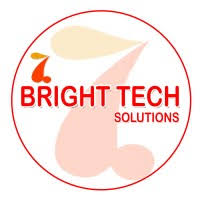Key Ingredients of Social Media Optimization
To get the best results out of social media optimization, a business should precisely know which factors to pay attention to, including:
1. Optimization of Profiles:
Your social profiles are, indeed, the digital face of your brand. Profile optimization is the first stage of any social media optimization policy. Ensure that your profile information is complete and that it is consistent with and reflective of your brand. Major elements of profile optimization include:
Profile picture: An immediately recognizable, high-quality, branded image (such as your company logo).
Username/Handle:Utilize the same username across all platforms, and ensure your target audience can find you.
Bio: Create a bio that describes your business and its offerings with keywords related to your business.
Website link: Link directly to your website or to a landing page that will route traffic.
Contact info: Ensure your contact information has been updated and is readily available.
2. Content Optimization:
Content is the backbone of your social media optimization efforts. Following are some ways to optimize your content for better reach and engagement:
Use engaging visuals: Video or image-based content performs better than text-only updates.
Optimize for each platform: Each social media has its formats and constraints. For example, Twitter demands small, punchy updates, while Instagram is all about visual telling.
Post regularly: Chalk out a schedule of posting, which will help to retain the attention of the audience.
Use hashtags wisely: Hashtags can help categorize a post and make it more findable. Use relevant and trending hashtags to reach an audience of a bigger magnitude.
Include CTAs: Always encourage the audience to take action, which should be promoted in your posts, whether it is “Learn more,” “Sign up,” or “Shop now.”
3. Engagement Optimization:
Engagement with your audience is an important element in relationship building and loyalty. To create maximum engagement, businesses need to:
Comment and message response: Through comment and message responses, let them know their input means something to you. Do so promptly.
Encourage user-generated content: Request your audience share their experience with your brand through reviews, photos, or testimonials.
Run Interactive Campaigns: This includes events like polls, contests, and live Q&A sessions; all are outstanding ways to drive engagement and make it community-oriented.
4. Analytics and Tracking
To understand what works and what doesn’t in your social media optimization strategy, you have to analyze the KPIs, including:
Engagement Rate: It is a proportion of likes, comments, shares, and clicks, to the number of followers.
Reach: The number of unique users that view your content.
Impressions: The total number of views your content receives.
Referral traffic: The number of visitors that visit your website through social media platforms. By utilizing these metrics, businesses could identify the flaws that require change and update them in their SMO strategies.
Best Practices for Social Media Optimization:
Eager to extract maximum efficiency from your social media optimization? Let’s get you underway.
1. Choose the Right Platforms:
Not every social networking site is suitable for all businesses. Focus on those social media platforms where your target audience is most active. For example, if yours is a B2B company, then LinkedIn might be more productive than Instagram. On the other hand, if your business operates within the fashion or lifestyle vertical, then your possibilities of engaging visually become much better with Instagram and Pinterest.
2. Influencer Marketing:
Partnering with influencers who resonate with your target audience can extend your reach into new and authentic areas of social media. Influencers can introduce your brand to new audiences and lend credibility to your products or services.
3. Optimize for Mobile:
Most of the users of social media use their mobile devices to access the platforms. Make sure your content is mobile-friendly, and that images and videos can load quickly and text is easily readable on a small screen.
4. Be Authentic:
Authenticity is the road to trust with your audience. Shun the exact promotional content and ensure the creation of value for your people. Give them behind-the-scenes content, success stories of your customers, and actual interaction; this will help you build a deeper connection with your audience.
5. Keep Up with Trends:
The social media space is ever-evolving. Keep tabs on fresh trends, and when a new platform feature, viral content format, or shift in user behavior emerges, revisit your strategy accordingly.
6. Cross-Promote Content:
Promote your social media content through all possible distribution sources like email newsletters, blogs, and websites. Cross-promotion increases the probability of your content being viewed and shared more.
7. Schedule Posts at Optimal Times:
Analyze audience activity patterns to determine the peak times for posting. This is likely to increase the level of engagement in content; posting at the most active times is likely to raise the level of views and shares dramatically.
Grow organic traffic on your SMO Marketing plans and packages
Unlock the potential of your business growth
Use the following KPIs to see how well your social media optimization strategy is working:
Follower growth
If that number goes up, it means your brand is getting wider exposure and gaining new users.
Engagement rate
If it’s high, it implies that the audience is resonating with your content.
Referral traffic
Also, track website traffic influenced by social media using tools like Google Analytics.
Conversion rate
The ratio of social media users that are converting into leads, customers, or subscribers.
These metrics will have to be reviewed from time to time for you to get the best out of your SMO strategy.





